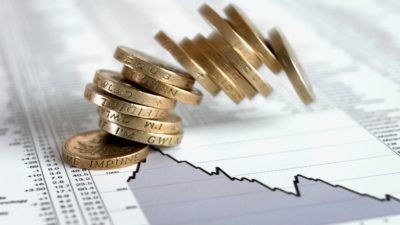According to share account provider AJ Bell, analysts estimate the combined dividend yield of all the companies in the FTSE 100 index will be around 4.1% in 2022.
And I think that’s a reasonable figure to use in calculations aimed at working out the potential of the UK stock market to deliver passive income via shareholder dividends.
Compounding gains from dividend stocks
For example, if I put around £210,000 in a low-cost index tracker fund following the Footsie, I’d potentially earn an annual dividend income of around £8,400. And that would give me £700 a month to spend from passive income. Although such an outcome isn’t certain or guaranteed.
The yield of the Footsie varies up and down over time as the businesses behind the stocks alter their payments. And changes can occur at any time whether positive or negative.
However, some UK companies are yielding higher than the FTSE 100 index. For example, big mining company Rio Tinto has a prospective yield just above 9%, as I write. Electricity-focused utility company National Grid expects a yield just below 5%. And telecoms outfit Vodafone is around 5% as well.
But they aren’t the only London-listed companies with high dividend yields. So I’d aim to invest regular money into selective high-yielding stocks. Then I’d plough all the dividends back into my investments with the aim of compounding my gains and building up the value of my investment pot.
If I keep investing regular monthly sums for many years and keep compounding my gains, the goal of reaching a pot worth £210,000 could be achievable. But it’s worth me bearing in mind that not all company dividends are sustainable.
Diversification and close monitoring
For example, stocks in cyclical sectors are known for their famine-and-feast characteristics. And dividends could be here today and gone tomorrow. But that doesn’t mean I should never invest in cyclical stocks. It just means I need to invest at opportune times and keep an eye on my stocks when holding them.
Right now, I think natural resources stocks look attractive. So I’d be inclined to consider stocks such as Glencore, Anglo American and BP. But when it comes to a dividend-led investment strategy, one of the best approaches for me is to invest with diversification across sectors. And that means I’d also target defensive, less-cyclical companies such as Imperial Brands, Tate & Lyle and the other companies mentioned in this article.
One of the great strengths of high dividend stocks is they tend to have other value characteristics as well. And one theory I’m keen on right now is that stocks with strong value characteristics will likely lead the charge higher in the next bull market.
After all, it’s hard to deny that growth stocks with high valuations have seen substantial falls lately. And it could mean they’ve had their day in the sun for the time being, and perhaps for years to come.







